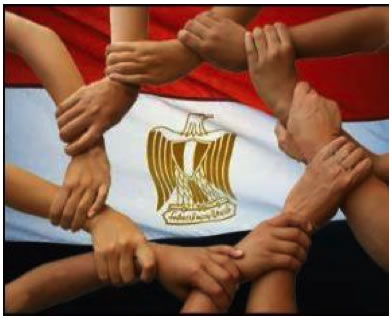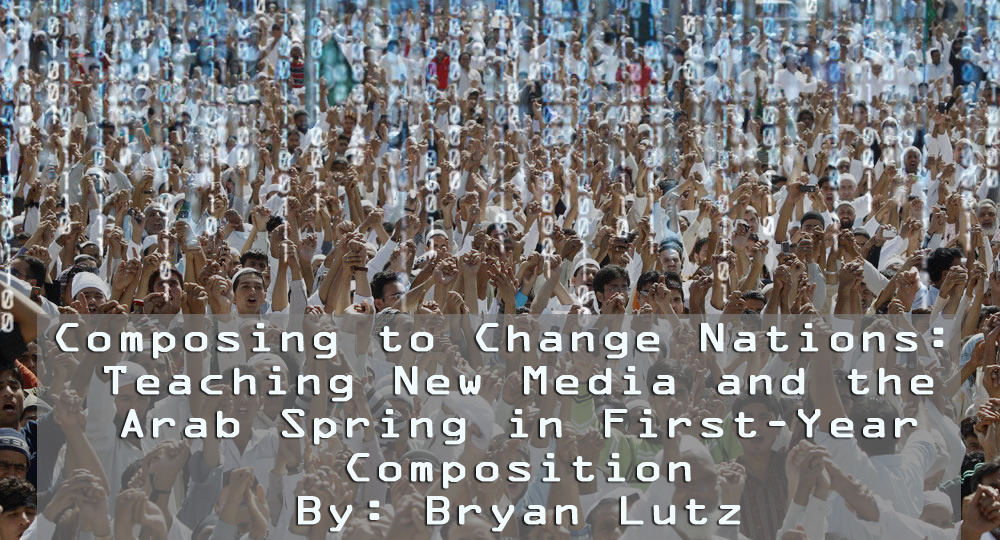The Arab Spring: Revolutions in Tunisia and Egypt
Affordances
 |
| Twitpic shared by Tunisian protesters |
Facebook and Twitter are credited with being the technologies of choice in the Arab Spring. Facebook allows people to create profiles where they construct an identity based on their interests and their history. People can share what languages they speak, where they live, where they were born, or where they work and/or study. People can share their nationality, gender identification (although those selections are limited), or whether they are gay or straight or any variation in between. They can also share daily thoughts about their lives and join causes and organizations where they network with people who share their views or identities. More importantly people can compose through social networking sites. They share photos and videos often with alphabetically expressed thoughts on their relevance. We can know nearly instantly about each other's problems in our politics and often with people freely discussing their stakes in the issues. Twitter is similar. With a profile and up-to-the-minute statements combined with hypertext links to various media forms, people can express and share their interests. But unlike Facebook, the amount of text you can post is limited to 140 characters of texts and/or links, thereby limiting how much can be communicated in a single post. The format of the medium requires that users must be concise, but this does not restrict a users ability to construct meaning. With Twitter people can also post images and video with "Twitpic." The image to the right shows a Twitpic shared by Tunisian protestors that combines the logo of Twitter (the white bird) with an image of a fist toward the sky (a symbol often associated with revolutions). This serves as an example of the composed metonymy that is shared within the realm of these sites. Though an image like this is not composed on Facebook and Twitter, composition is happening every time aTwitpic is combined with the text comments of the participant. It is a social world and writing is an inherently social act (Pandey 2007, pp. 78), thus these social networking cites help people to compose for the purpose of communicating both their values and identities to each other..
 |
| Picture taken from an Egyptian Facebook page |
By comparison, news media outlets drew international attention with digital articles and blogs. Much of what can be found in print can be found online and with the advent of “Google Reader” and other such RSS feeds, we can be connected to numerous avenues of information at once. Many news organizations have also started blogs where text and image are combined to frame issues and raise awareness about the public sphere. These blogs can be updated quickly to provide the public near instant coverage of circumstances as they develop. Much like the picture you see to the left, these different types of new media seemed to be working hand in hand. The common thread between these two types of new media is that both are able to network people together and spread information, and often with rhetorical considerations in mind.
And they are also fast. New media has tremendous rhetorical velocity when spreading information making it ideal for such rapid political participation. As Jim Ridolfo and Dànielle Nicole DeVoss (2009) identify, “rhetorical velocity is a term that describes an understanding of how the speed at which information composed to be recomposed travels—that is, it refers to the understanding and rapidity at which information is crafted, delivered, distributed, recomposed, redelivered, redistributed, etc., across physical and virtual networks and spaces” (technorhetoric). To ground this point in an example we can look again to Mohamed Bouzizi. Bouzizi declared his intentions to die on his Facebook page before immolating himself in front of the Tunisian house of parliament. As he fell to his knees, allegedly, an image of his body was taken with a camera phone and disseminated using Facebook and Twitter, thereby sparking public outrage within Tunisia. Within a day the news organization Al Jeezera publishes the information in cyberspace. Al Jeezera’s online presence then published his suicide for an international audience. With new media and its affordances of both velocity and networking, everyone in the world could know what started the Tunisian revolution in nearly 24-hours.
